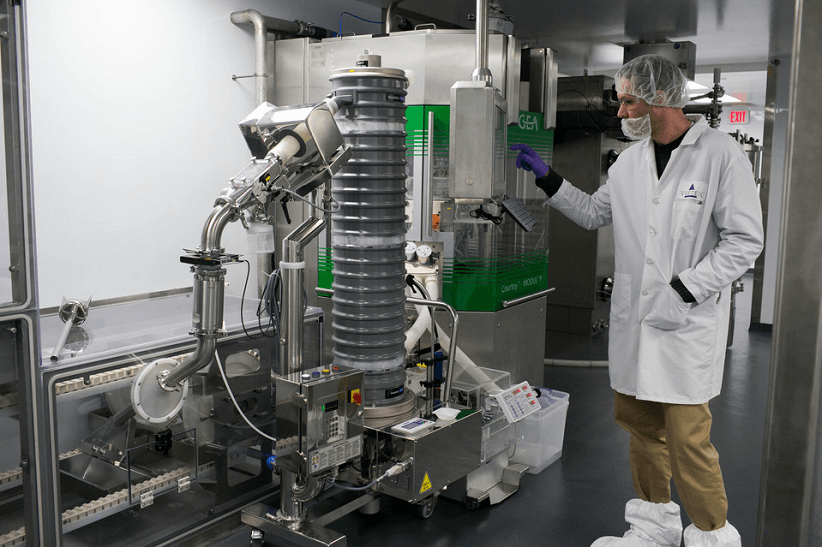The scope of this study is to explore the understanding of Measuring, Controlling and Predicting Process Performance in Pharmaceutical Industry. It is concerned with process optimization through increased efficiency and effectiveness of the process or product. Main purpose is to reduce or eliminate overall variation in the product or process.
Performance measures should be expressed in units of measure that are most meaningful to those who must use to make decisions based on these measures. The implementation of process performance measurement for a specific product or process should involve employees to stimulate ideas and reinforce the notion.
Definition Of The Process
A set of activities, methods, practices and tools that people use to develop and maintain a product and its associated work products.
Measuring Process Performance
While measuring process performance; measure only what is important and involve employees in the design and implementation of the measurement system, give them a sense of ownership which leads to improvement in the quality of the measurement system. While choosing measures, choose important parameters; as measurement costs money.
Process Performance Measurement can be used for:
1) Control process: Purpose is to reduce expense overruns so that agreed-to objectives can be achieved.
2) Self Assessment: Assess how well a process is functioning including improvements that have been made.
3) Continuous Improvement: Identify defect sources, process trends and defect prevention. Can determine process efficiency and effectiveness as well as opportunities for improvement.
4) Management Assessment: Involves: (I) Planning and meeting established operating goals/standards. (II) Detecting deviations from planned level of performance. (III) Resorting performance to the planned levels.
The steps involved in process performance measurement are as follows:
1) Identify Process Flow: First and most important step. Prepare a list of processes, key processes and flow diagrams for these processes.
2) Identify Critical Activity to be measured: The critical activities are those that significantly impact total process efficiency, effectiveness, quality, timeliness, productivity and safety where it makes the most sense to locate a sensor and define an individual performance measure within a process. Use quality tools such as Pareto principle, brainstorming, etc., to prioritize the critical activities.
3) Establish Performance Goals or Standards: All performance measures should be tied to a predefined goals or standards. Having goals or standards is the only way to meaningfully interpret the results of measurements and gauge the success. Goals can be set in response to customer needs or complaints.
4) Establish Performance Measurements: Build the performance measurement system by identifying individual measures that should provide quantitative answers in units. The sequence to be followed while establishing performance measurements – Locate and Identify Raw Data, Identify the sensor* to accomplish the measurement and determine how often to make measurement.
*Is a device or person that is able to detect the presence or absence of some phenomena and provide a reading of the intensity of that phenomenon in a quantifiable form with the appropriate units of measure. The sensor is what or who will do the measuring or data collection for measurement system.
5) Identify Responsible Party: A specific individual or team needs to be assigned the responsibilities for each of the steps in the performance measurement process.
6) Data Collection: Collect data and pre-analyze it in a periodic way to observe any early trends and confirm the adequacy of data collection system. Data must be specific enough to provide relevant information. Supervise the data collection process to determine whether the data is collected properly.
7) Analyze/Report Actual Performance: Convert raw data formally into performance measures, display it into understandable form [group the data in a form (tabulation, graphs, statistical comparison, etc.) that makes it easier to draw conclusions] and produce it in the form of report. Make the report comparative to goals which likely consist of sets of tables/charts that track the performance measures, backing with basic conclusion.
8 Compare Actual Performance to Goals: Compare performance as presented in the report to predetermined goals or standards and determine the variation if any.
9) Corrective Actions: Depending upon the magnitude of variation between measurements and goals decide the form of corrective action required. If variation is large, there may be problem with process which needs correction to bring the performance back. If variation is small, the process is probably in a good shape. The actual determination of corrective action is part of the quality improvement process and not the performance measurement system. Basic concept of corrective actions should be removal of all identified causes of defects resulting in an improved process.
10) Are New Goals Needed?: Even in successful systems changes may need to be revised in order to establish ones that challenge organizations resources. Goals and standards need periodic evaluation to keep up with the latest organizational processes.
Predicting Process Performance
While predicting process performance make quantitative predictions about a particular production process and estimate resource consumption (electricity, fuel, labour, etc.), time delays, effectiveness and efficiency.
Conclusion
The most beneficial aspect of process performance measurement is pinpointing problem areas and focusing attention on actions that will have the best impact on overall business performance. Effective process performance measurement is the compass that guides management towards meaningful results at the process level, which will tie in directly with the company’s goals. Inappropriate measures often lead to respond to situations incorrectly and may reinforce undesirable behavior.
References
- Dennis M. Ahern, Aaron Clouse and Richard Turner. A Practical Introduction to Integrated Process Improvement. Addison-Wesley. 2nd Edition 2004.
- Wilton C. T. Quality improvement Tools. Juran Institute, Inc. 1989.
- Pall, Gabriel A. Quality Process Management. Englewood Cliffs N J: Prentice-Hall, Inc. 1987.
- Richard D. Stutzke. Measuring and Estimating Process Performance. Annual CMMI Technology Conference and Users Group Meeting Denver, Colorado. Nov. 2005.
- Peter Blaisdell. Twenty-First Century Pharmaceutical Development. Interpharm Press Denver, Colorado.
